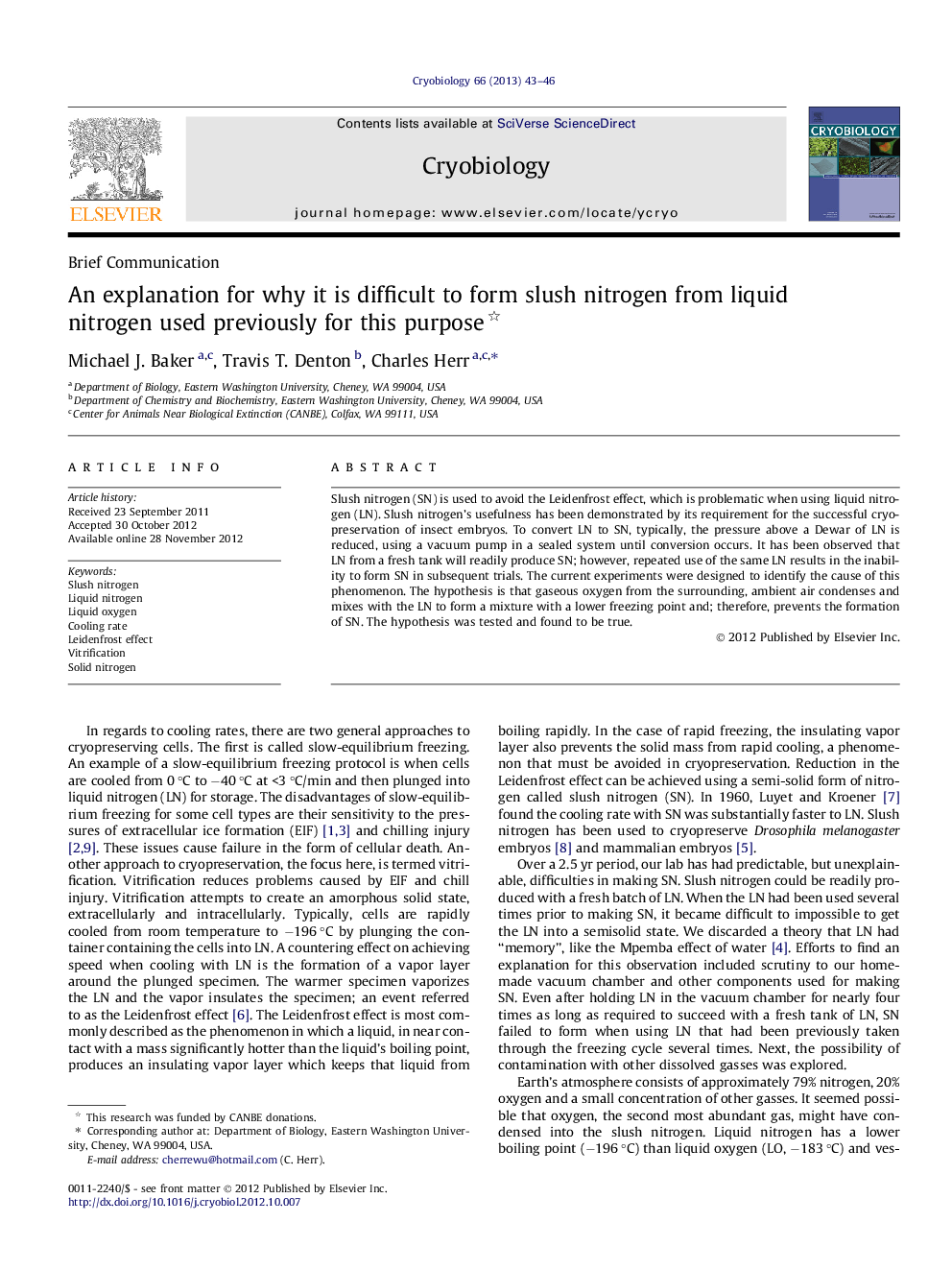| Article ID | Journal | Published Year | Pages | File Type |
|---|---|---|---|---|
| 10928268 | Cryobiology | 2013 | 4 Pages |
Abstract
Slush nitrogen (SN) is used to avoid the Leidenfrost effect, which is problematic when using liquid nitrogen (LN). Slush nitrogen's usefulness has been demonstrated by its requirement for the successful cryopreservation of insect embryos. To convert LN to SN, typically, the pressure above a Dewar of LN is reduced, using a vacuum pump in a sealed system until conversion occurs. It has been observed that LN from a fresh tank will readily produce SN; however, repeated use of the same LN results in the inability to form SN in subsequent trials. The current experiments were designed to identify the cause of this phenomenon. The hypothesis is that gaseous oxygen from the surrounding, ambient air condenses and mixes with the LN to form a mixture with a lower freezing point and; therefore, prevents the formation of SN. The hypothesis was tested and found to be true.
Keywords
Related Topics
Life Sciences
Agricultural and Biological Sciences
Agricultural and Biological Sciences (General)
Authors
Michael J. Baker, Travis T. Denton, Charles Herr,
